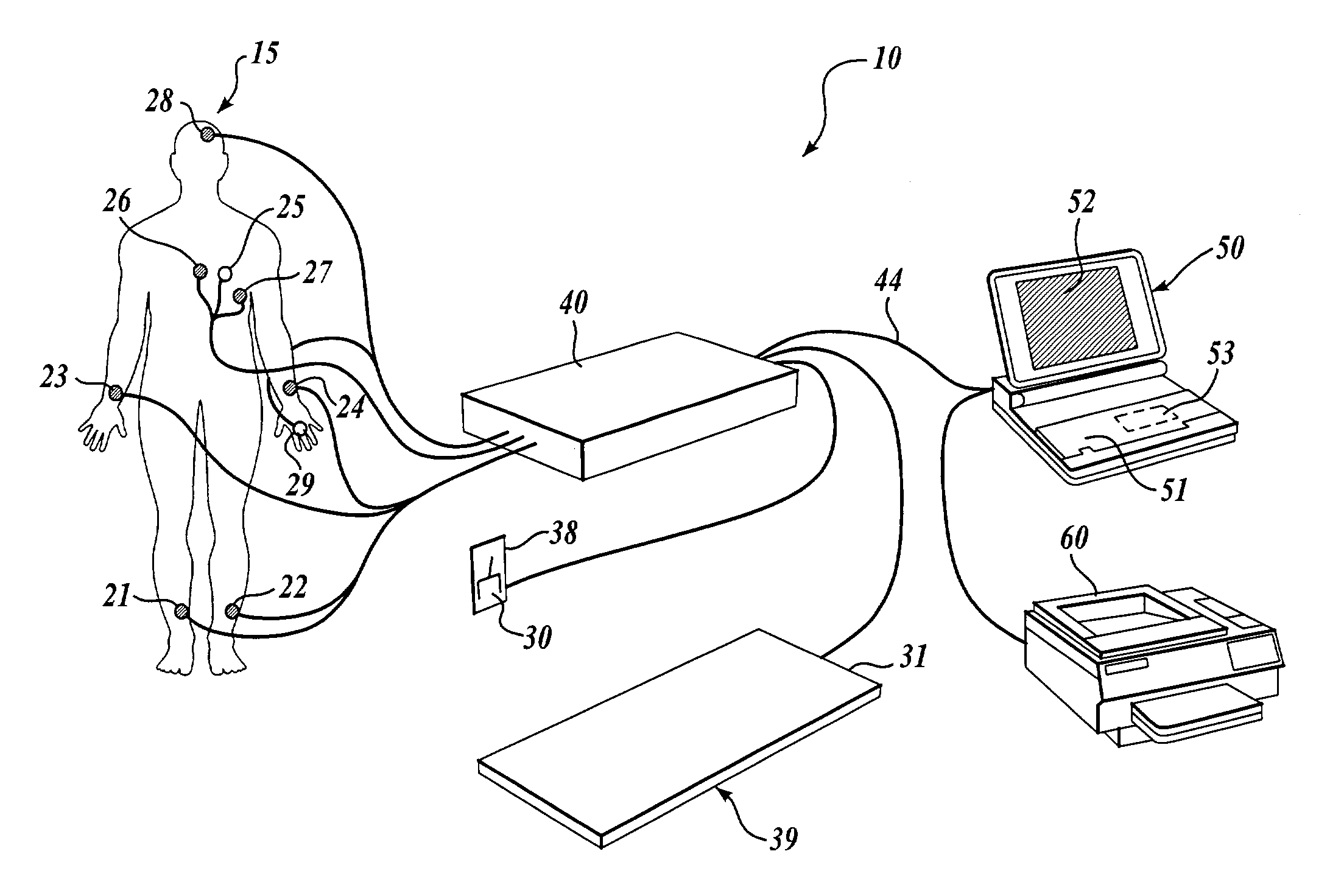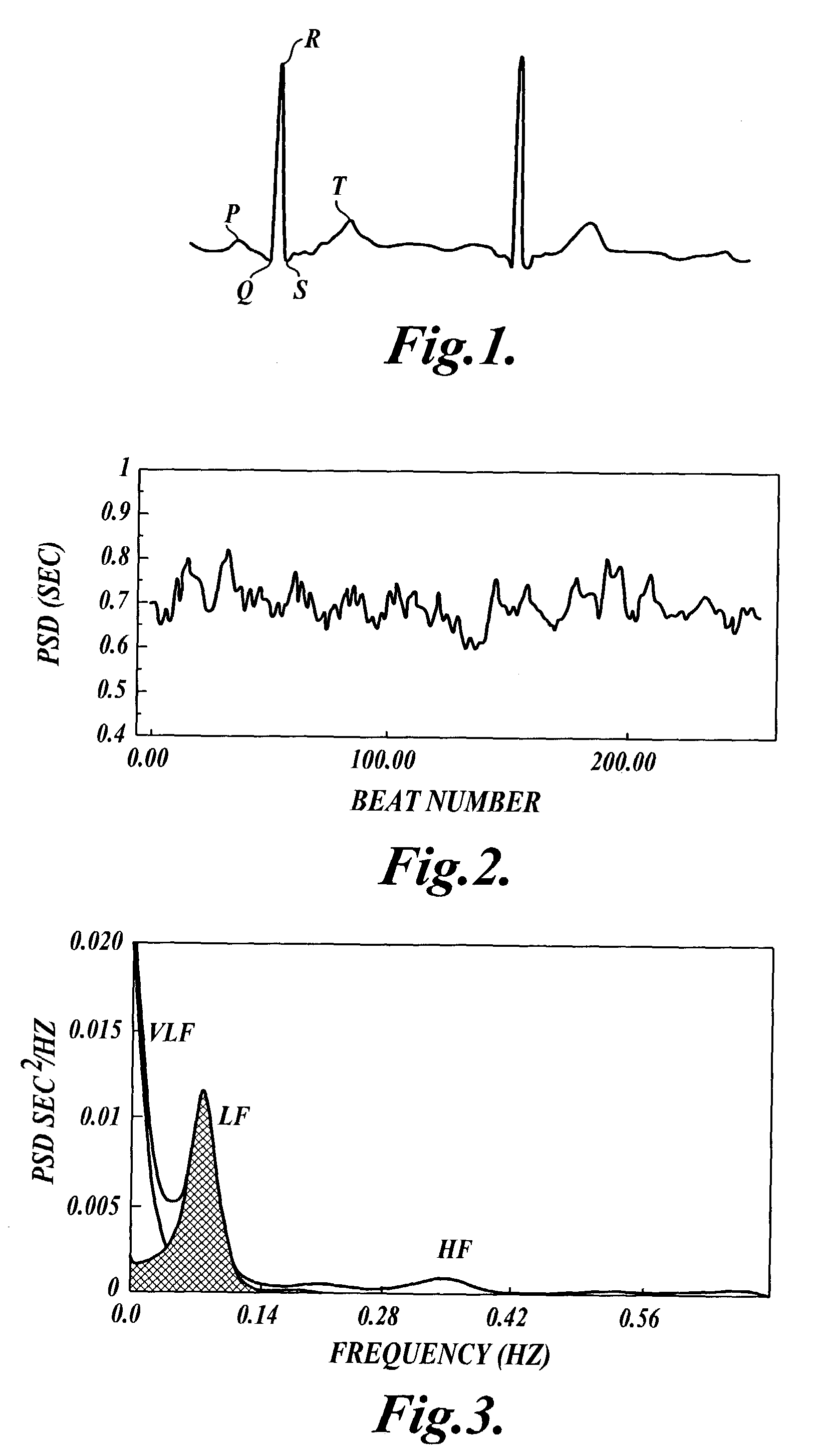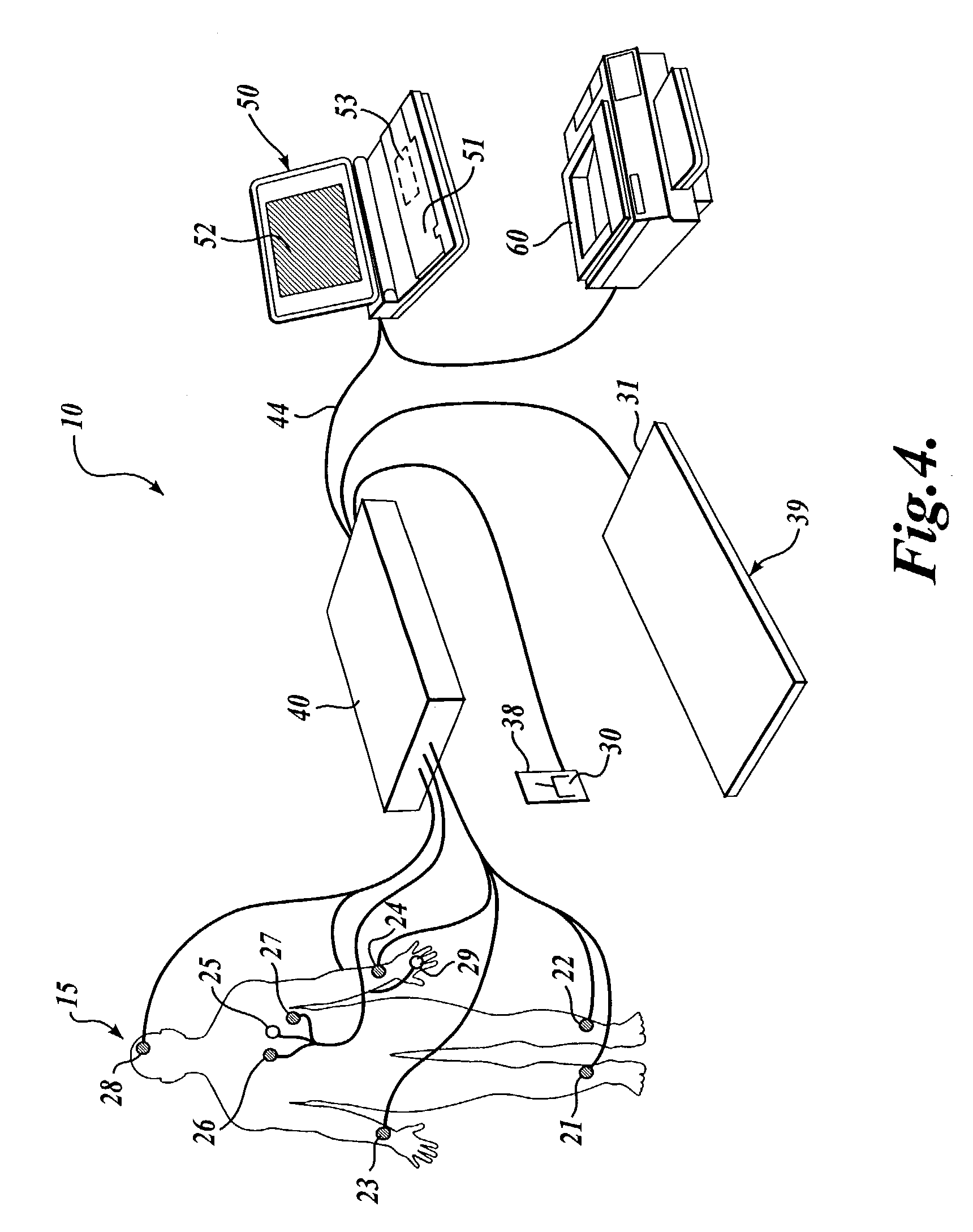Methods for determining whether to provide an inhibitor of sympathetic nervous system activity to a human being suffering from an autoimmune disease or fibryomyalgia
a human being and autoimmune disease technology, applied in the field of determining whether to provide an inhibitor of sympathetic nervous system activity to a human being suffering from an autoimmune disease or fibromyalgia, can solve the problems of unnecessarily subjected, undesirable side effects, and drug(s) that may not be effective in improving the symptoms of an autoimmune disease in all human patients
- Summary
- Abstract
- Description
- Claims
- Application Information
AI Technical Summary
Benefits of technology
Problems solved by technology
Method used
Image
Examples
example 1
[0061]This Example shows the use of system 10 to demonstrate that rheumatoid arthritis patients who did not respond to the arthritis medication etanercept alone, but required a combination of arthritis medications, suffered from excessive sympathetic nervous system activity.
[0062]Thirty-one patients with rheumatoid arthritis (RA) were evaluated. All patients had taken etanercept (Enbrel®, Amgen Corp.) for at least six months to allow patients to reduce or eliminate other RA medications if possible. To consider why some patients responded to etanercept alone while others required etanercept combined with other medications, demographic variables were compared, including gender, age, RA duration, presence of RA nodules, vasculitis, rheumatoid factor, anti-nuclear antibody, erthrocyte sedimentation rate, C-reactive protein, hematocrit, weight and duration of etanercept use. Disease activity was assessed by examination and the Multi-Dimensional Health Assessment Questionnaire (MDHAQ). A ...
example 2
[0069]This Example describes the use of system 10 to demonstrate that excessive sympathetic nervous system activity is associated with active multiple sclerosis.
[0070]Heart rate variability in five patients suffering from Multiple Sclerosis (MS) was assessed using system 10. Two patients had experienced from one to three MS flares over the past year; three were in MS remission. As shown in Table 2 below, subjects without MS activity had significantly higher vagus and lower sympathetic and tension scores compared to those with MS activity. Values in brackets represent the normal range for each type of measurement.
[0071]
TABLE 2vagussympathetictensiontotalPatientMS activity(.16–.41)(15–55)(15–180)powerG.D.remission.2637593402J.S.remission.1751220236L.Lflares.095230266D.M.flares.0955488119M.Z.flares.095341291
example 3
[0072]This example shows that medication to reduce excessive sympathetic nervous system activity in a patient suffering from severe, previously untreatable, psoriatic arthropathy caused a reduction in the severity of the disease.
[0073]Over a period of fifteen years, the patient suffered chronic joint flares, and exceptional synovial thickening that was resistant to all know treatments, including Etanercept. Pramipexole was then administered to the patient and increased to a dosage of 2.0 mg per day at bedtime. The patient's restlessness and insomnia improved and etanercept became more effective over six weeks. The following heart rate variability measurements were made in the patient using system 10: vagus, 0.16; sympathetic, 54; tension, 220; total power, 283.
[0074]As the dosage of pramipexole was increased over a period of 4 weeks to 4.5 mg per day at bedtime, joint swelling and pain improved significantly, and excessive sympathetic nervous system activity decreased: vagus, 0.19; ...
PUM
 Login to View More
Login to View More Abstract
Description
Claims
Application Information
 Login to View More
Login to View More - R&D
- Intellectual Property
- Life Sciences
- Materials
- Tech Scout
- Unparalleled Data Quality
- Higher Quality Content
- 60% Fewer Hallucinations
Browse by: Latest US Patents, China's latest patents, Technical Efficacy Thesaurus, Application Domain, Technology Topic, Popular Technical Reports.
© 2025 PatSnap. All rights reserved.Legal|Privacy policy|Modern Slavery Act Transparency Statement|Sitemap|About US| Contact US: help@patsnap.com



